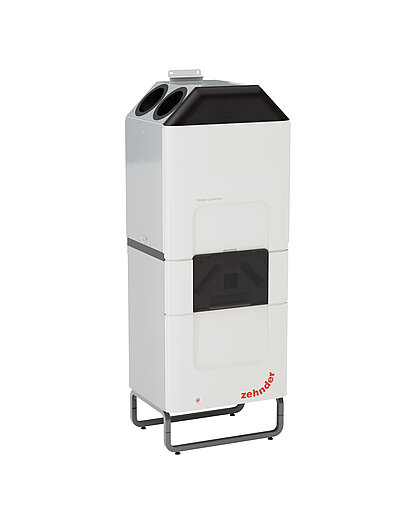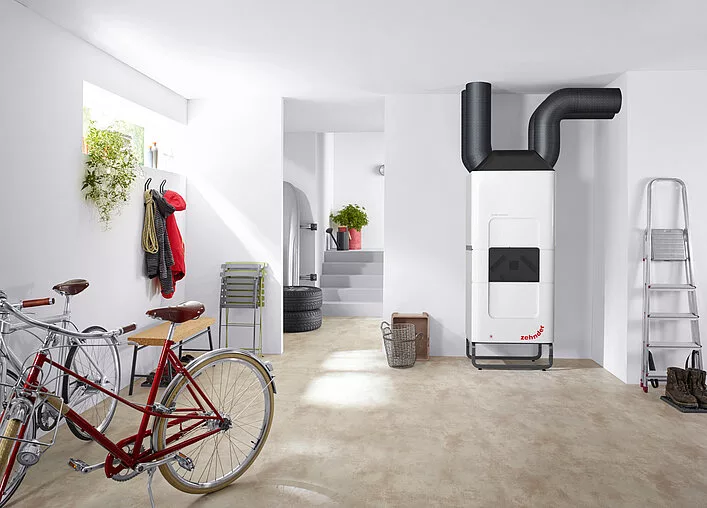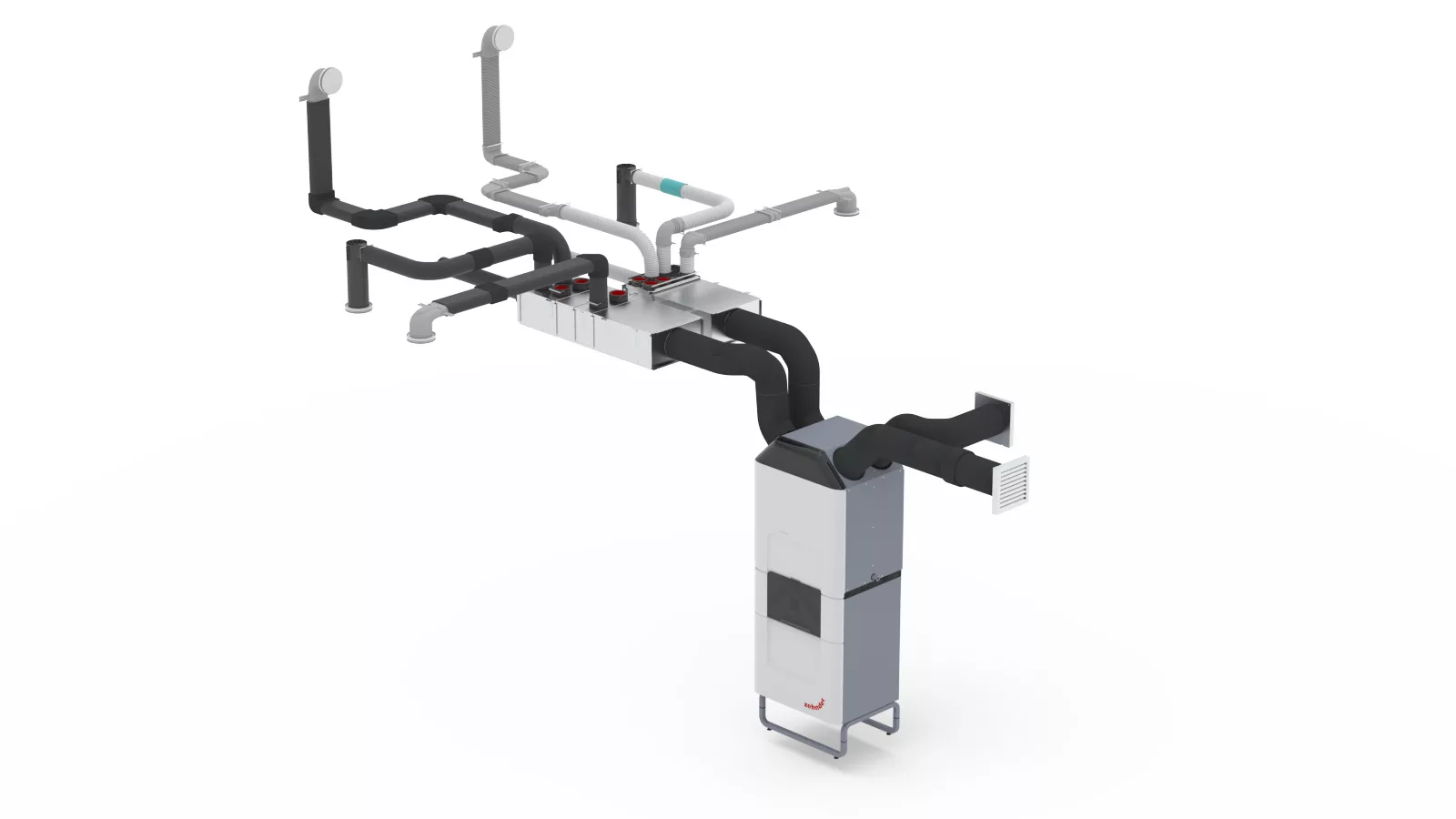Theoretically, if you have a properly balanced MVHR system in your passive house, you don’t need to have heating, as supply air keeps the house at a constant air temperature, usually around 18˚C. However, if you prefer to have a warmer home, or want the ability to heat certain spaces as required in the winter, then you may choose from various heating options, including far-infrared heating panels, radiators, or underfloor heating. Another option is post heating, where heat is supplied via the air in the MVHR supply ducts.
Before reading on, please note that post heating is only an option if you have a passive house with a low heating load. Detailed PHPP calculations would need to be made to check whether post heating would be an economical option for you. If PHPP models confirm it would work in your space, post heating can be a great (and cheaper) way of providing extra heat in your home.
Zehnder’s new ComfoClime unit – which works in conjunction with the ComfoAir Q 350, 450 and 600 MVHR units – can do heating and cooling, so it is worth considering as a post heater option.

Why use post heating?
In many instances, heating via the air isn’t an economical option and we would recommend other heating options over post heating. However, if your passive house has the appropriate low heating load, and your budget doesn’t stretch to, say, underfloor heating – post heating can actually be a very good (and much cheaper) way to provide extra heat via the air. This extra heat can be produced via electricity or hot water, but we tend to install post heaters that use electricity.

What does post heating involve?
Post heaters are very easy to install and are simply added while we are installing your MVHR ductwork (the 1st fix). All supply ducts need to be insulated. The post heater is placed in the supply duct close to the MVHR unit and the temperature is controlled via a thermostat. If you want to be able to have differing temperatures in different rooms, or on different floors, post heaters can be placed in individual supply ducts in the chosen rooms, with a separate thermostat for that space. You could also, for example, use a post heater for the upstairs, and underfloor heating for the downstairs.







